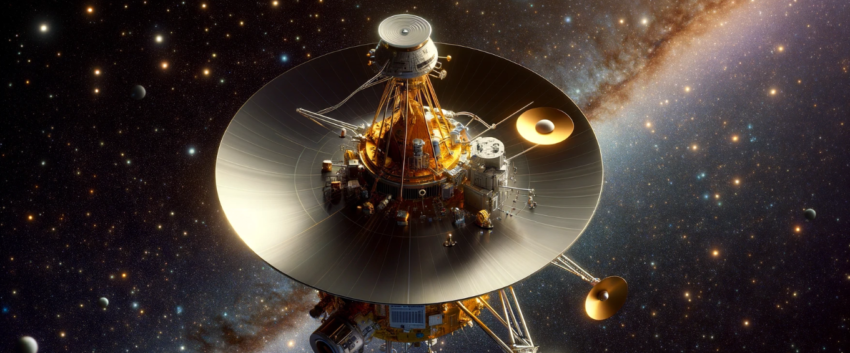| Listen to our audio presentation: A Journey Through the History of Quantum Mechanics |
After a prolonged stretch of five months of nonsensical data transmissions, NASA’s veteran spacecraft – Voyager 1, has finally regained its communications power. The valuable data about Voyager 1’s onboard engineering systems that we had been deprived of for months began flowing in on April 22, 2024, after some creative troubleshooting by NASA engineers and scientists.
What led to the communication glitch in this long-standing marvel of human-made space exploration? The glitch has been traced back to one of Voyager 1’s onboard computers, known as the flight data subsystem (FDS), which is responsible for packaging scientific data and engineering updates before they are transmitted back to Earth.
The problem? A flawed chip within the FDS, resulting in incoherent data transmissions. The team was unable to repair the chip and therefore had to reassemble and store the faulty code within the FDS memory, a process that required significant technical sleuthing, including decoding the sequence of the ‘gibberish’ transmissions.
The restoration of communication wasn’t an overnight process. While the initial fix was sent to Voyager 1 on April 18, the team had to wait almost 45 hours for a response from the probe owing to the staggering distance of 15 billion miles between the Voyager 1 and Earth.
One small piece of data received from the iconic spacecraft, however, was cause for celebration. Against all the odds, the Voyager 1, which was designed to last just four years but has been venturing farther from our sun for over 46 years, had begun to communicate effectively again, sending clear information on its health status. This engineering triumph fuels great expectations about the probe’s ability to continue sending science data.
The journey does not stop here. According to NASA, the coming weeks will see the relocation and adjustments of other sections of the FDS software with an aim to begin transmitting vital scientific data once more.
The twin of Voyager 1 – Voyager 2, meanwhile, continues to operate normally. The duo, after their respective voyages around Saturn, Jupiter, Uranus, and Neptune, have now ventured into interstellar space, making them the human race’s furthest and long-lived emissaries in space exploration.
Voyager Missions – Key Facts
• Launched over 46 years ago
• Voyager 1 was the first human-made object to venture into interstellar space
• Voyager 1 discovered supervolcanic world on Jupiter’s moon, Io
• Voyager 1 sent back useful data suggesting liquid on the surface of Saturn’s moon, Titan
• The spacecraft system comprises 10 instruments including a command computer subsystem (CCS) providing sequencing, control functions, fault detection, and antenna pointing information
• Power supply comes from three Radioisotope Thermoelectric Generators (RTGs) currently supplying about 249 watts each
• Voyager 1 is currently more than 15 billion miles (24 billion kilometers) away from Earth
Reference 1: Green, Al. “NASA’s Voyager 1 Resumes Sending Engineering Updates to Earth.” NASA, 22 April 2024.
Reference 2: Bartels, Meghan. “After Months of Gibberish, Voyager 1 Is Communicating Well Again.” Scientific American, 22 April 2024.
Reference 3: Cofield, Calla. “NASA Engineers Make Progress Toward Understanding Voyager 1 Issue.” NASA Sun Spot Blog, 13 March 2024.

